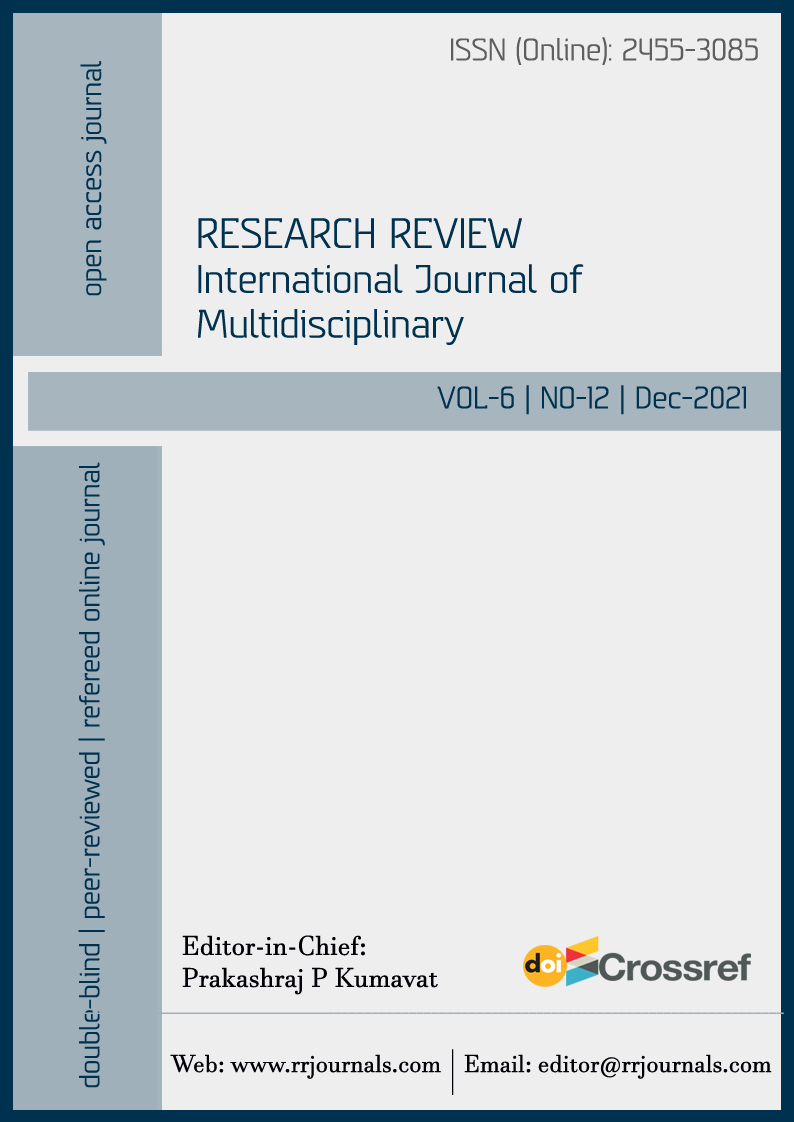Marriage Rituals in Kol Tribe
कोल जनजाति में विवाह संस्कार
DOI:
https://doi.org/10.31305/rrijm.2021.v06.i12.015Keywords:
Tribal, Marriage, Baghelkhand, Mayan, Puja, Koldahka, Parchan, KohbarAbstract
Marriage is a sacred bond in which the bride and groom, taking their clan gods and fire as witnesses, commit to live together in each other's happiness and sorrow and in future life. In the Kol tribe, marriages are performed by many small rituals. Mandap Chhajan and Mayan Puja, Matrika Puja or Maati Mangal, the ritual of offering oil, Parchan, Janvasa, Dwarchar or Dwar Puja, Oli Bharai, Lava Parswai, Sindoordan, Mangal Phere, Kanyadaan, foot worship and Khobar. But in the present scenario, the role of the pandit in the marriage ceremony is visible from beginning to end. In the evening, men and women gather under the pavilion in the courtyard for entertainment, singing and singing with the help of musical instruments like dholak etc. Koldahka dances while playing. The groom resolves the bride to keep the promise. Always give advice to live happily with each other. After the marriage at the young age of the first bride, the gauna was performed in the third, fifth or seventh year when the bride became an adult. But now after becoming an adult, due to the marriage taking place, the cow is also done immediately. Remarriage among tribes is not difficult nor is it considered wrong. Yet divorce or divorce is not encouraged in any tribe.
Abstract in Hindi Language
विवाह एक पवित्र बंधन होता है जिसमें अपने कुल देवताओं तथा अग्नि को साक्षी मानकर वर तथा कन्या एक दूसरे के सुख-दुःख तथा भावी जीवन में साथ रहने के लिए वचनबद्ध होते है। कोल जनजाति में विवाह अनेक छोटी-छोटी रस्मों द्वारा सम्पन्न किया जाता है। मण्डप छाजन तथा मायन पूजा, मातिृका पूजन या माटी मंगल, तेल चढ़ाने की रश्म, परछन, जनवासा, द्वारचार या द्वारपूजा, ओली भराई, लावा परसवाई, सिन्दूरदान, मंगल फेरे, कन्यादान, पाँव पुजाई और कोहबर।शायद पहले इन संस्कारों को बिना पण्डित के सम्पन्न किया जाता रहा होगा किन्तु वर्तमान परिदृश्य में विवाह संस्कार में पण्डित की भूमिका शुरू से अन्त तक दिखाई देती है।शाम के समय कोल पुरुष तथा महिलाएँ मनोरंजन के लिए आंगन में मण्डप के नीचे एकत्रित होकर ढोलक आदि वाद्य यंत्रों की सहायता से गाते व बजाते हुए कोलदहका नृत्य करते है। वर वधू को वचन निभाने के लिए संकल्पित करते है। एक दूसरे के साथ सदैव सुखपूर्वक जीवनयापन की सलाह देते हैं। पहले वधू की छोटी उम्र में विवाह के बाद तीसरे, पांचवे या सातवें वर्ष जब वधू वयस्क हो जाती थी गौना सम्पन्न किया जाता था। परन्तु अब वयस्क होने के उपरान्त विवाह होने के कारण तुरन्त ही गौना भी करा लिया जाता है। जनजातियों में पुनर्विवाह में कठिनाई नहीं होती है और न ही इसे गलत माना जाता है। फिर भी किसी भी जनजाति में विवाह विच्छेद या तलाक को प्रोत्साहन नहीं दिया जाता है।
Metrics
Downloads
Published
How to Cite
Issue
Section
License
This is an open access article under the CC BY-NC-ND license Creative Commons Attribution-Noncommercial 4.0 International (CC BY-NC 4.0).



